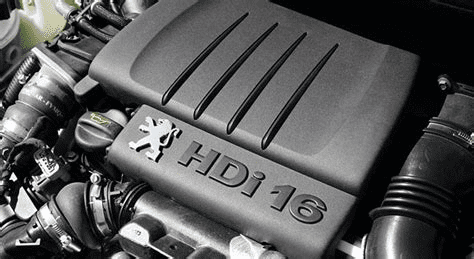1.6 HDI 16v DV6TED4 engine tuning


Without any doubt the most common HDI engine for tuning and remapping is the 1.6 16V DV6 engine. This engine has such great tuning potential as the turbo is so easily accessible so even complete beginners can easily upgrade it. The fuel pump is massively overrated and the 16v head flows so well we can achieve crazy power figures.
The 1.6 16v blocks come in 75, 90 and 110 Variants all using the same parts with only the injectors and turbo changed. We have tuned many of these to above 200 BHP without needing to upgrade the internals of the engine, that’s just how great they are.
Let’s start with the 1.6 16v HDI 75 BHP variant, this comes fitted to the vans such as the Citroen Berlingo and the Peugeot Partner 1.6 HDI. The turbo charger is the MHI TD025 and there are two choices of injector, until 2007 0445110239 was used, and from 2007 to 2010 0445110311 was used.
The 1.6 HDI 16V 75 BHP variant is actually great to drive, the standard mapping will initially feel nippy and responsive but a little under powered once you get used to it; part throttle gives the same power as full throttle and it will bog down later in the rev range. The good news is that the 75 BHP variant uses the same components as the 1.6 16V 90 model, so we can get great gains from a Stage 1 remap without any mechanical upgrades.
Our stage 1 remap for the 1.6 HDI 16v 75 BHP engine provides constant and increased torque through the entire rev range whilst remaining well within the safe limits of the clutch and turbo charger. Peak BHP will now be 120BHP on the Stage 1 remap, whilst the torque will take a big step up to 270Nm. Power delivery will be smooth and stable and it won’t drop off in the higher RPMs.
Now the next model up is the 1.6 16V HDI 90 BHP variant, this is commonly fitted to the Peugeot 207 1.6 HDI 90, or the Citroen C3 1.6 HDI 90, aswell as the Berlingo and Partner vans. As mentioned previously, this engine actually has the same hardware as the 75 BHP variant so our power gains will be the same. The Stage 1 remap for the 1.6 16v HDI 90 BHP engine gives 120 BHP and 270Nm. Not only do you get 30 BHP more but you also get better drivability and better fuel economy, what’s not to love? If you want a bit more power we also stock a custom made stainless steel performance down pipe.
The final variant of the 1.6 HDI DV6TED4 16V engine is the 110 BHP model. This comes fitted with a Bosch EDC16 ECU and a Garrett GT1544V VNT turbo charger. This is what allows the 16v 110 to achieve more power. Earlier version of this engine used the Bosch 0445110259 injector and from 2007 onwards a higher flowing 0445110297 injector was used.
For the 1.6 HDI 16v 110 variant our Stage 1 remap provides constant and increased torque through the entire rev range whilst remaining well within the safe limits of your clutch, dual mass flywheel and turbo charger.
We’ve designed our 1.6 HDI 110 stage 1 remap to run cleanly and in unison with the DPF system, this means that there is no increased risk of clogging the DPF filter as long as regular long journeys are undertaken by the vehicle.
For those who want to go a bit further, or simply want to get rid of a troublesome DPF from their 1.6 HDI 110 then we’ve got the Stage 1+ remap. The full power stage 1 remap from HDI Tuning will take your 1.6 110 to 143BHP and 295Nm.
We’ve developed our 1.6 remaps not only to give optimal performance, but also to remain within the limits of the stock hardware of your vehicle such as the dual mass flywheel and the clutch, and most importantly the turbo.
Most customers see a great economy gain during normal driving conditions with the full 1.6 16v DPF delete pipe thanks to a free flowing exhaust system. EGR delete can also be included in the price with a Stage 1+ remap if required. EGR delete will increase reliability and offer better low speed pickup.
You can program the Bosch EDC16C34 ECU yourself using our online remapping service. For this we recommend to use the Kess V2 tool. With this tool you can you program directly over the OBD port.